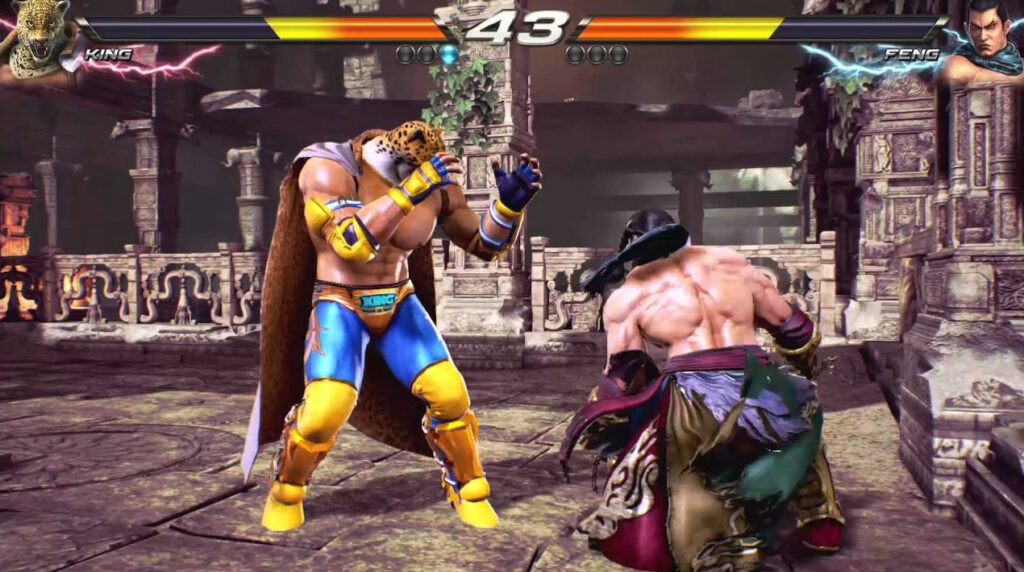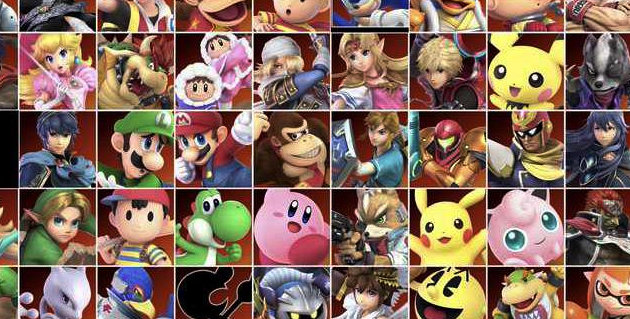Introduction to Fighting Games
Fighting games are a subgenre of competitive video games that emphasize one-on-one combat between characters with distinct abilities and fighting styles. They have evolved significantly since their inception in the arcade culture of the 1970s and 1980s, eventually migrating to home consoles and online platforms. The very first notable fighting game, “Pong” by Atari, laid the groundwork for competition, but it was “Street Fighter II,” released by Capcom in 1991, that truly popularized the genre and set a standard for many games that followed.
Key elements that define fighting games include a diverse roster of characters, each featuring unique moves, combos, and special abilities. Gameplay typically centers around skillful timing, reflexes, and mastery of techniques, which contribute to a deep and engaging experience. The genre has fostered a vibrant community, with tournaments and competitive events attracting players from all over the world. Games like “Tekken,” “Mortal Kombat,” and “Guilty Gear” have not only become cultural icons, but also give rise to a multitude of franchises, expanding the reach of fighting games into mainstream media.
Moreover, the progression of technology has led to enhanced graphical capabilities, elaborate story modes, and online connectivity, further elevating the player experience. Community engagement plays a crucial role in the evolution of fighting games, as players often create content, share strategies, and discuss developments through various platforms. The genre is continuously adapting to include new features that resonate with both veteran gamers and newcomers alike, showcasing its enduring appeal. As we look ahead, the integration of Virtual Reality (VR) and Augmented Reality (AR) technologies promises to revolutionize the fighting game experience, potentially redefining how players interact with the digital realm and each other.
Current Trends in Fighting Games
The fighting game genre has experienced significant evolution over the past few years, primarily driven by technological advancements and shifts in player preferences. Popular titles such as “Street Fighter V,” “Tekken 7,” and “Mortal Kombat 11” have maintained a strong foothold in the gaming community, reflecting ongoing interest and engagement. Each of these games features a unique combat system that appeals to both casual players and competitive gamers, facilitating a diverse player base.
The competitive landscape has been enlivened by professional tournaments, particularly events like EVO (Evolution Championship Series) and local scene tournaments that attract both amateur and seasoned players. These competitions not only showcase elite gameplay but also serve as a platform for community interaction, enabling players to form connections and share strategies. The rise of streaming platforms has further amplified this trend, providing a way for enthusiasts to engage with the game in real-time, while simultaneously raising the profile of professional players.
Player preferences have shifted as well, with an increasing number of gamers seeking accessible gameplay experiences that promote inclusivity. This is evident in the rise of cross-platform play, allowing friends to fight against each other regardless of the hardware they own. However, the genre still faces several technological limitations, such as issues with latency in online matches and system inequalities, which can impact competitive integrity. As players navigate these challenges, many have called for advancements in netcode technology to provide a smoother online experience, ensuring that the excitement of fighting games remains prevalent.
The integration of online play has undoubtedly reshaped the way players engage with fighting games. While traditional local multiplayer experiences have their charm, online functionalities have opened doors to global competition and practice, transforming the genre into a more interconnected and vibrant scene overall.
Introduction to VR and AR Technology
Virtual Reality (VR) and Augmented Reality (AR) represent groundbreaking advancements in technology that are transforming the gaming landscape. VR immerses users in a fully digital environment, enabling them to interact with a computer-generated setting and its elements through specialized headsets and controllers. In contrast, AR overlays digital information onto the real world, typically using devices such as smartphones or AR glasses, facilitating interaction between the user and both virtual and physical elements.
The core of VR technology lies in its ability to create a sense of presence, allowing users to feel as if they are truly part of a digital universe. This is achieved through high-definition visual displays, spatial audio, and motion tracking, which work together to simulate a 360-degree environment. Players can engage with the game world by moving their bodies, which enhances the realism of the experience. Popular VR applications range from immersive adventure games to educational simulations, illustrating the technology’s versatility.
On the other hand, AR technology utilizes cameras and sensors from devices to recognize the surroundings and project virtual elements into the user’s field of view. This enables players to experience gameplay that is intertwined with their actual environment, creating unique gaming experiences. Titles like Pokémon GO exemplify how AR can transform traditional gaming by encouraging exploration of the real world while interacting with virtual characters. The potential of these technologies in various sectors, especially gaming, continues to expand as developers explore innovative applications.
The synergy of VR and AR not only enhances traditional gaming experiences but also opens new avenues for game design and interaction. As the gaming industry evolves, it is imperative to examine how these technologies can be integrated into emerging genres, particularly fighting games, which could benefit immensely from their immersive capabilities.
Potential Integrations of VR in Fighting Games
The advent of virtual reality (VR) technology has the potential to radically transform the landscape of fighting games by introducing immersive experiences that fundamentally change gameplay mechanics. One of the most significant advantages of VR is the ability to create highly interactive environments that transport players into the heart of the action. Players can engage in battles within meticulously designed arenas that respond to their movements, intensifying the thrill of combat and adding a layer of realism previously unattainable in traditional console gaming.
Moreover, VR has the capability to track and replicate realistic fighter movements. Utilizing motion sensors, players can throw punches, execute kicks, and perform intricate combos by their own physical actions. This advancement allows for a much higher degree of accuracy in gameplay, which not only enhances player satisfaction but also introduces a unique skill curve that rewards strategic thinking and physical dexterity. The sensory feedback delivered through VR headsets can further enhance this experience, as players feel as though they are actually experiencing the impacts of combat, creating a more visceral connection with their avatars.
Additionally, interactive gameplay elements can be seamlessly integrated into VR fighting games. For example, players may encounter environmental obstacles or power-ups in the immersive landscapes, requiring them to adapt their strategies dynamically as they navigate through a virtual battlefield. This level of interactivity adds a thrilling unpredictability to matches, encouraging players to explore creative tactics rather than relying on fixed gameplay methods. Consequently, the potential integration of VR technology can elevate player engagement to unprecedented levels, allowing for a multifaceted experience that blends physical, mental, and emotional dimensions of gaming.
Exploring the Role of AR in Fighting Games
Augmented Reality (AR) has the potential to revolutionize fighting games by merging the virtual and real-world environments, creating immersive experiences that resonate with players on multiple levels. Unlike traditional gaming that confines users to screens, AR allows players to interact with digital combatants overlaid onto their physical surroundings. This innovative approach fosters a sense of presence and engagement that can enhance gameplay significantly.
One of the most exciting aspects of AR in fighting games is the ability to physically engage with characters and opponents. Imagine a scenario where players can see their favorite fighters placed in their living rooms or backyards, allowing for an immersive practice session or a thrilling duel with friends. This brings a new layer of strategy, as players can utilize actual space for movement and tactics, creating an unprecedented dynamic rarely seen in conventional video games.
Moreover, AR technology can promote accessibility in gaming. By lowering the barriers typical of conventional gaming setups, AR can enable more players to join in the fun. Those who may not have access to high-end gaming consoles or PC setups can engage with fighting games through their mobile devices. A player could easily project fighting characters onto any flat surface, facilitating social interactions without the need for specialized gaming equipment. This ensures that everyone, regardless of their technological means, can enjoy the thrilling nature of fighting competitions.
Furthermore, AR can facilitate social play by allowing multiple players to engage in a single AR experience simultaneously, fostering collaboration as much as competition. Whether it involves team matches or cooperative challenges, AR enhances interaction among participants, allowing for a unique blend of strategy and camaraderie. As developers continue to explore AR’s potential, it is evident that fighting games could evolve into rich, community-driven experiences that break free from traditional constraints.
Challenges Facing VR and AR in Fighting Games
The integration of Virtual Reality (VR) and Augmented Reality (AR) into the fighting game genre presents several challenges that developers and players must navigate. One of the primary technological limitations pertains to the hardware requirements needed for an immersive experience. Many players may not own high-end VR equipment, which significantly restricts the audience for VR fighting games. The cost of VR headsets, motion controllers, and storage space can deter potential users who are unfamiliar with or unwilling to invest in advanced gaming solutions.
Moreover, accessibility issues arise as not all players may be able to physically engage with the type of motion required in VR environments, which can alienate segments of the gaming community, including individuals with disabilities. Developers must ensure that VR and AR fighting games accommodate these diverse player needs, which can complicate the design process and increase development costs. The need for inclusive options is vital to broaden the game’s reach and to build a more universal appeal within the genre.
Health concerns related to prolonged VR use also bring forth significant challenges. Users may experience motion sickness or discomfort during extended gaming sessions, which can limit the enjoyment and usability of VR fighting games. Developers need to implement features that enable players to customize their experiences, such as adjusting sensitivity or offering varied gameplay modes to reduce strain. Educating players on safe VR practices is equally important, as misinformation can lead to negative perceptions of VR gaming.
Ultimately, the development of VR and AR fighting games requires significant capital investment not only in cutting-edge technology but also in research towards enhancing user experience. This necessitates a careful balance between innovation and practicality. Addressing these challenges is essential for the genre to thrive and evolve in an increasingly competitive and technologically advanced landscape.
Future Innovations in the Genre
The fighting game genre has long been synonymous with tactical gameplay, character mastery, and vivid graphics. As virtual reality (VR) and augmented reality (AR) technologies continue to advance, their integration into fighting games heralds a new era characterized by remarkable innovations. One potential transformation lies in the enhancement of graphics, where game developers can leverage hyper-realistic environments and character models. Such improvements may create immersive experiences that allow players to engage with their surroundings in ways previously unimaginable. Enhanced graphical detail can also contribute to unique attack animations and special moves that captivate players and provide a greater sense of accomplishment.
Artificial intelligence (AI) represents another significant area for advancement. Future fighting games could feature AI opponents that adapt dynamically to player strategies, providing an experience that remains challenging and engaging. These intelligent opponents could learn from player behavior patterns, adjusting their tactics in real-time, and facilitating a sense of rivalry and continuous progression. With AI capabilities evolving, players can expect more innovative and responsive opponents that elevate the competitive nature of fighting games.
Dynamic environments may further enhance gameplay, providing a setting that evolves throughout combat. Imagine shifting backgrounds, interacting elements, or destructible environments that open up new strategic opportunities. As the player navigates these responsive arenas, the integration of VR and AR can offer an unparalleled sense of presence and immersion, making fights feel visceral and alive.
Lastly, storytelling in fighting games may undergo significant evolution. Future titles could leverage AR and VR to enhance narrative experiences, allowing players to experience character backstories and plotlines in a uniquely interactive manner. Such innovations could bridge the gap between visual storytelling and gameplay, enriching the emotional weight of fights. Additionally, as technologies beyond VR and AR emerge, such as haptic feedback systems and neural interfaces, the potential exists for even deeper and more meaningful player connections within the fighting game landscape.
Community Response and Adaptation
The integration of virtual reality (VR) and augmented reality (AR) technologies into the fighting game genre has prompted a variety of responses from the gaming community. Fan acceptance of these innovations plays a crucial role in shaping the future of these games. Many players are intrigued by the potential for immersive experiences that VR and AR can offer. The ability to physically participate in battles rather than mere button mashing could breathe new life into the genre, catering to a broader audience while retaining the existing fan base.
As the fighting game community begins to embrace these technologies, we can expect a gradual adaptation process. Developers will likely work on integrating VR and AR features into established games, ensuring the gameplay remains familiar yet innovative. This could involve creating hybrid modes that allow players to choose between traditional controls and immersive experiences. For instance, a player could alternate between a classic 2D experience and a full 3D VR fight within the same title, catering to both nostalgic and forward-thinking players.
Moreover, this magnitude of change presents an avenue for community-driven content. Modding communities have historically played an essential role in the evolution of gaming. With VR and AR features, players may create unique experiences that reflect their creative interpretations of the genre. This might include custom arenas or new character designs that utilize AR overlays, promoting experimentation and excitement within the community.
Competitive players, facing a shift in mechanics and skill requirements, will need to adapt their gameplay strategies. The introduction of motion controls and spatial awareness will necessitate a reevaluation of input responsiveness and practice routines. Advanced skills from traditional fighting games may transfer, but players will undoubtedly invest time honing new techniques specific to VR and AR formats. This evolution in gameplay promises to foster a dynamic and engaging fighting game community, one that continuously adapts as technology progresses.
Conclusion: The Future is Combat
The landscape of fighting games is poised for significant transformation, driven primarily by the integration of Virtual Reality (VR) and Augmented Reality (AR) technologies. As we have explored throughout this blog post, these innovative mediums hold the potential to enhance the immersive qualities of combat games, enabling players to engage with their favorite titles in entirely new ways. The adaptability of VR and AR can elevate gameplay dynamics, providing more interactive and physically engaging experiences that traditional gaming platforms cannot offer.
However, while the excitement surrounding these technologies is palpable, it is crucial to balance innovation with player experience. The core essence of fighting games—intense competition, strategic depth, and community involvement—should not be overshadowed by technology. Developers must prioritize preserving these aspects while exploring the capabilities of VR and AR. Fostering community engagement through multiplayer options and ensuring that gameplay remains accessible will be essential for the longevity and success of future fighting titles.
In addition, as developers venture into incorporating VR and AR elements, it is imperative to consider user comfort and safety. Motion sickness and physical strain are valid concerns that must be addressed to create an enjoyable experience for all players. Rigorous testing and community feedback will be essential in shaping these technologies to enhance rather than detract from the gameplay experience.
In conclusion, the future of fighting games is not merely in adopting new technology but in enhancing the player experience, fostering community, and preserving the genre’s foundational elements. As VR and AR continue to advance, they promise an exciting future for fighting games that could redefine how we engage with this beloved genre. The next generation of fighters awaits, empowered by innovations that could amplify the combat experience in unprecedented ways.


